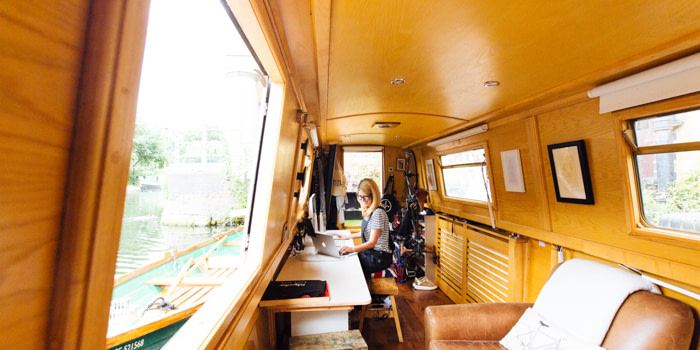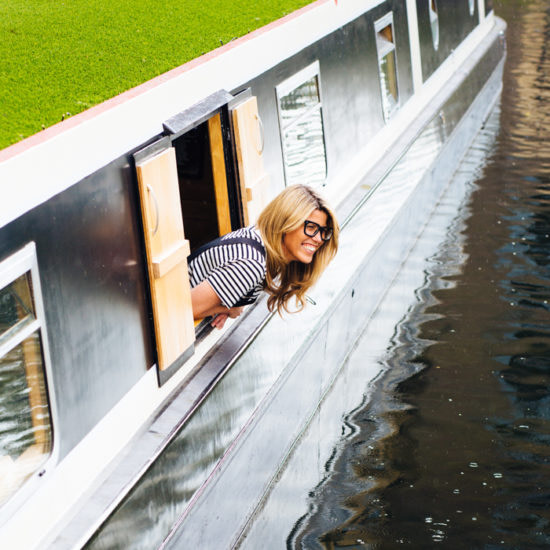“Life is short – work somewhere awesome”

Creatives tend have a blend of skills – that’s why networking by shared projects rather than single skills suits today’s diversity of talent. It’s on this principle that Pip Jamieson founded The Dots.
Pip Jamieson is the epitome of entrepreneurial high-energy – and we are in awe. The founder and CEO of creative networking platform The Dots, Pip is living the dream so many of us have – successfully making the leap from working in a 9-5 job to launching her own business.
Pip originally trained as an Economist at Edinburgh University – a far cry from the industry she’s a huge part of today. From the civil service, she made the leap into creative and, 4 years and 10,000 miles later in sunny Sydney, she launched The Loop, a business that was to shake up the way the Australian creative community worked.
After building the most successful network in Australia, it was time to go global. She moved back to the UK to start again with the same dream – a better way for creatives to network. This time, she named it The Dots.
Today, running The Dots from her Shoreditch office and living on her beautiful canal boat home (the boat’s name is Horace, FYI), she’s got big plans for the new year. We met her to talk about where she gets her boundless energy, how it felt to start again and why a fair way to network is the best thing for creativity.

You did it! You left the 9-5 behind to run your own business – how did that happen?
I originally trained as an Economist – I came from a creative family, but rebelled the other way. I went into the civil service thinking I was going to change the world, then realised that’d take about 25 years and I didn’t have the patience for it! Then I jumped ship, joined the BRIT Awards then landed my dream job in MTV and moved to Australia.
Working for MTV in Australia, we always needed to find creatives. We were always hiring mates of mates – which was the way everyone worked but the problem with that from a creative perspective is that if you’re not getting an injection of fresh ideas and skills, your output starts to become very homogenous.
I was struggling with what there was available. Networking sites at the time didn’t have creative applications – like support for multimedia. This was back before Facebook or LinkedIn were what they are today – Instagram didn’t even exist. When I’m finding creatives for the business I want to see their portfolios so I can see what they’ve worked on.

What led you to turn this problem into your own business?
I started the business out of sheer frustration with what there was available. We wanted to create something that’s really easy for people across the creative industries to connect online – but also to give them the commercial opportunities that are so crucial to freelancers.
My whole principle is : ‘Life is short, work somewhere awesome’. I was never someone who was like, ‘I’m going to be an entrepreneur’ – we started developing to solve a problem for ourselves and grew it into the biggest creative network in Australia. 67% of the creative industries were actively using the site.
We had no idea what we were doing – it’s not like now when there’s so much information online, so we had no idea what we were doing so it was all trial and error. But it worked!
How did you end up back in the UK?
We hit that classic start-up hurdle where my business partner and I wanted to go in different directions. I was always focused on international expansion. So I sold the business but acquired the global technology rights – then started all the way from scratch again.
Everything I’d made in the business in Australia I put back into relaunching it back in the UK. I went right from start-up to scale-up then right back to start-up again – so I had the platform, but I didn’t have any community or clients.
How did it feel to start again?
It’s an amazing gift – being given the second chance in the same business. We made so many mistakes the first time round – and to be able to start again and learn from that was great. It was the best thing that ever, ever happened. Now we’re back in scale-up mode.
Before I left, I had a big 360 review with my whole team and it was so good to take the learnings from our whole team – like, for example, I knew I had to bring in a COO. A lot of my team from Australia relocated to help us scale too.
How will making it easier to connect improve our creative industry’s output?
I got my initial job at the BRIT Awards through my dad – but I think that’s rubbish, because if I’d been born into a different background, I wouldn’t have got that initial break, and I wouldn’t be where I am now. It breaks my heart to think how much talent we’re squandering by not giving people a way in.
That, for me, is a bit of a travesty. There’s a super-bright bunch of creative people coming through. If they don’t know people in the creative industries, they don’t have a way in. So if we don’t give them that way in, the quality of our creative output is going to sink.
Diversity is very close to our hearts. Diversity is good for business – that’s proven now, so the problem now becomes how you connect with diverse talent. If you’re still going through the old-school way of using your existing network, that’s just going to perpetuate the problem.
How do you handle your work-life balance?
I get my energy from work – from meeting people and building connections. This whole cookie-cutter approach that everyone has to do yoga all the time, or not drink too much is rubbish – it’s about having the introspection to say ‘I’m the sort of person that gets energy from doing yoga, or walking’, or ‘I’m the sort of person that wants to go out on a Friday night’.
Everyone’s different – introverts might benefit more from not being around people, extroverts from being around people. The most important thing I learned is that you can’t really separate work and life – it’s all about knowing where you draw your energy from. Work actually brings me energy but at the same time, I now know there’s other things around me too that help make me feel sane. Being here on the water’s a big part of that – it’s very meditative. You can’t work all the time.
Photography by: Adrienne Pitts
Keep in touch
Get design inspiration, business tips and special offers straight to your inbox with our MOOsletter, out every two weeks.






